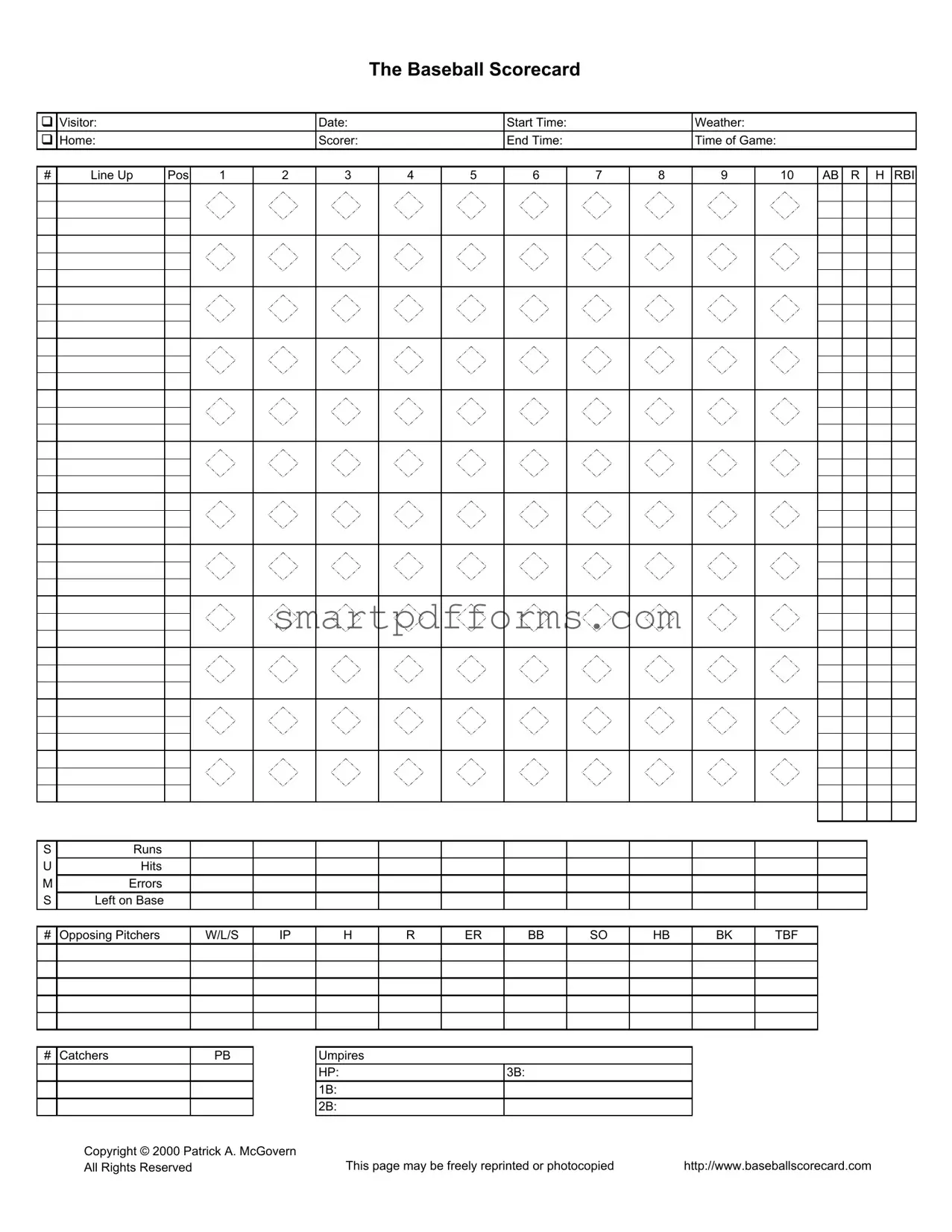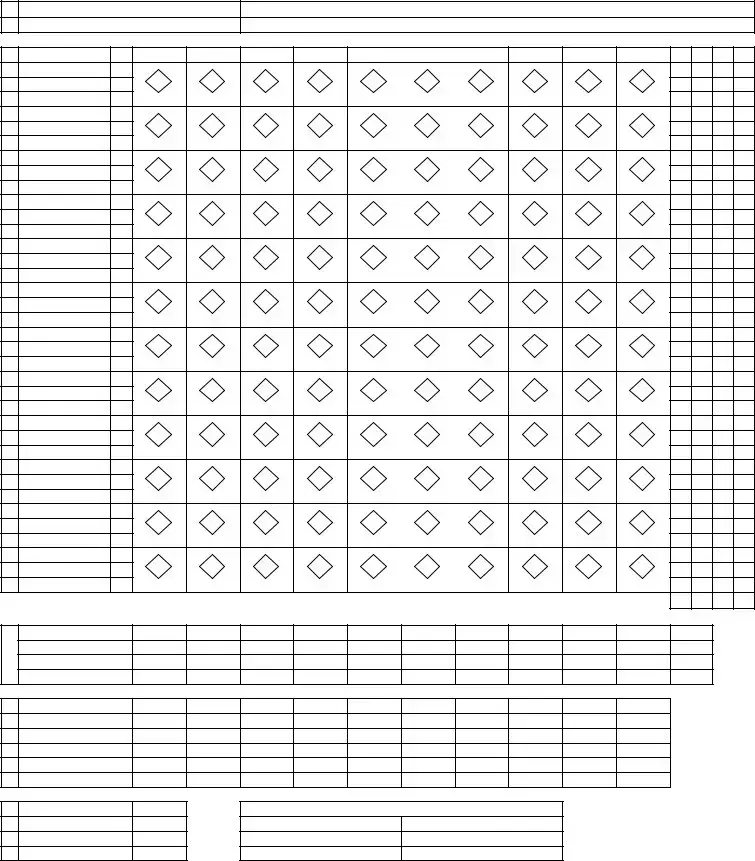At the heart of America's pastime is the ability to keep track of every pitch, hit, and run, and this is precisely where the Baseball Scorecard comes into play. It serves as an essential tool for fans, coaches, and players alike, preserving the details of the game in a structured format. From listing the teams playing as either visitors or home, to noting down the specific date, start time, and even the weather conditions, every aspect is meticulously recorded. The scorecard extends its utility by requiring the scorer’s details, marking the end time, and the total time of the game. It is designed to capture the line-up positions, at-bats, runs, hits, runs batted in, and more, across innings, alongside summarizing total runs, hits, errors, and left on base. Detailing opposing pitchers' statistics and catchers' performance alongside the umpires presiding over the bases and home plate enhances its comprehensiveness. This format, copyright protected yet freely distributable for personal use, encapsulates not just the strategy and outcome of the game but the very essence of baseball's analytical side. Crafted by Patrick A. McGovern in 2000, it has become an indispensable resource for those looking to understand or document the nuances of any baseball game thoroughly.

